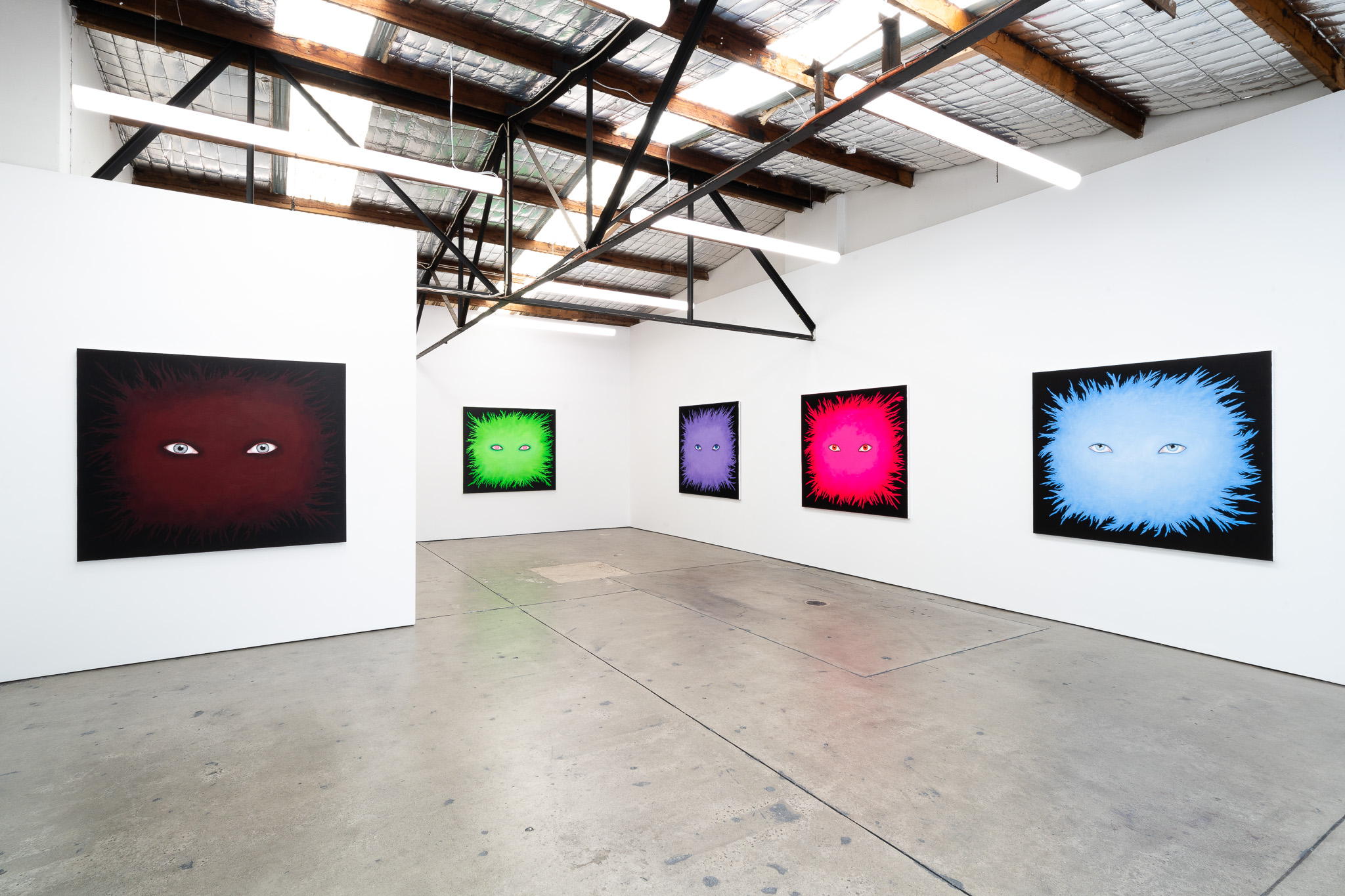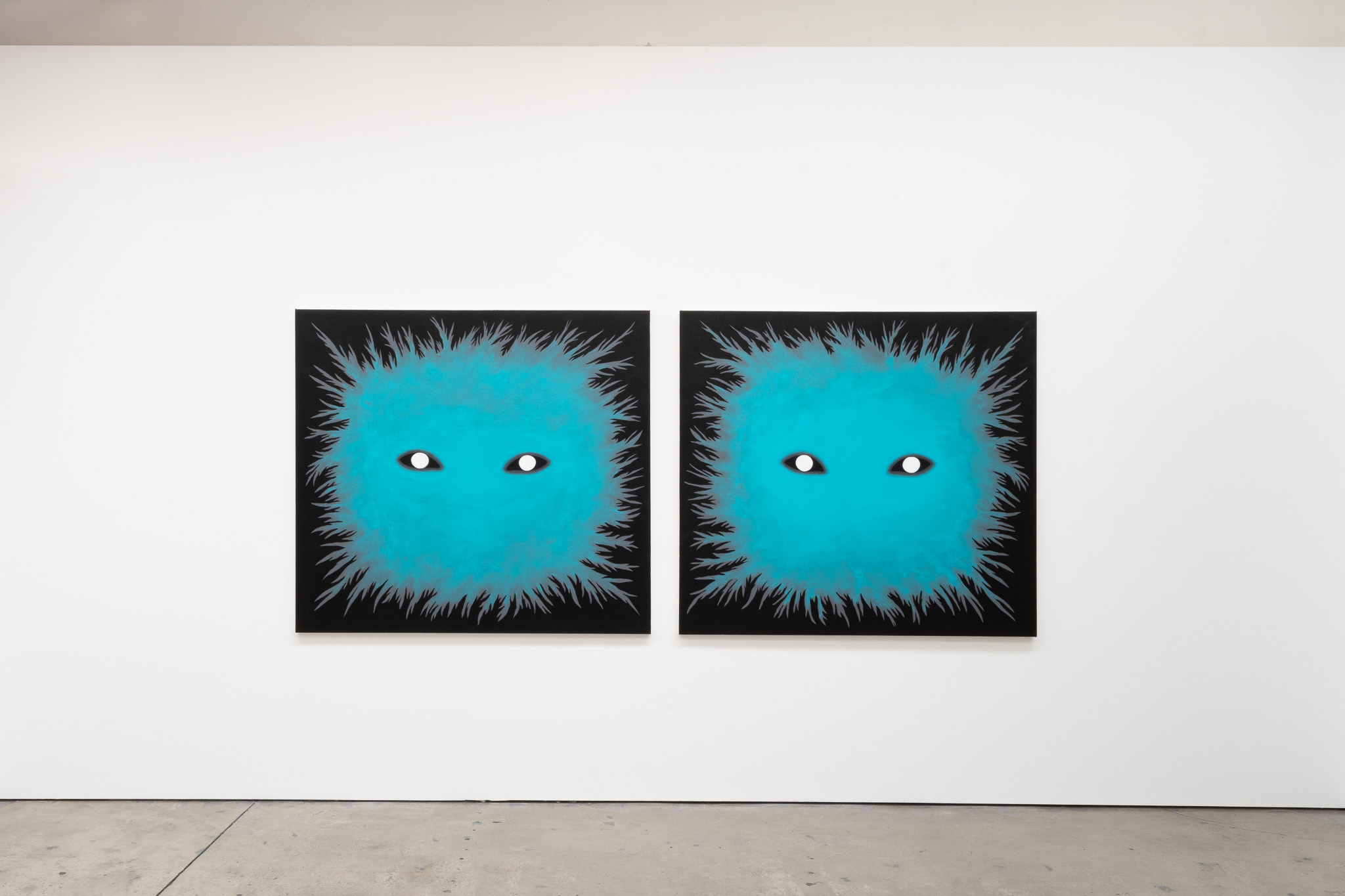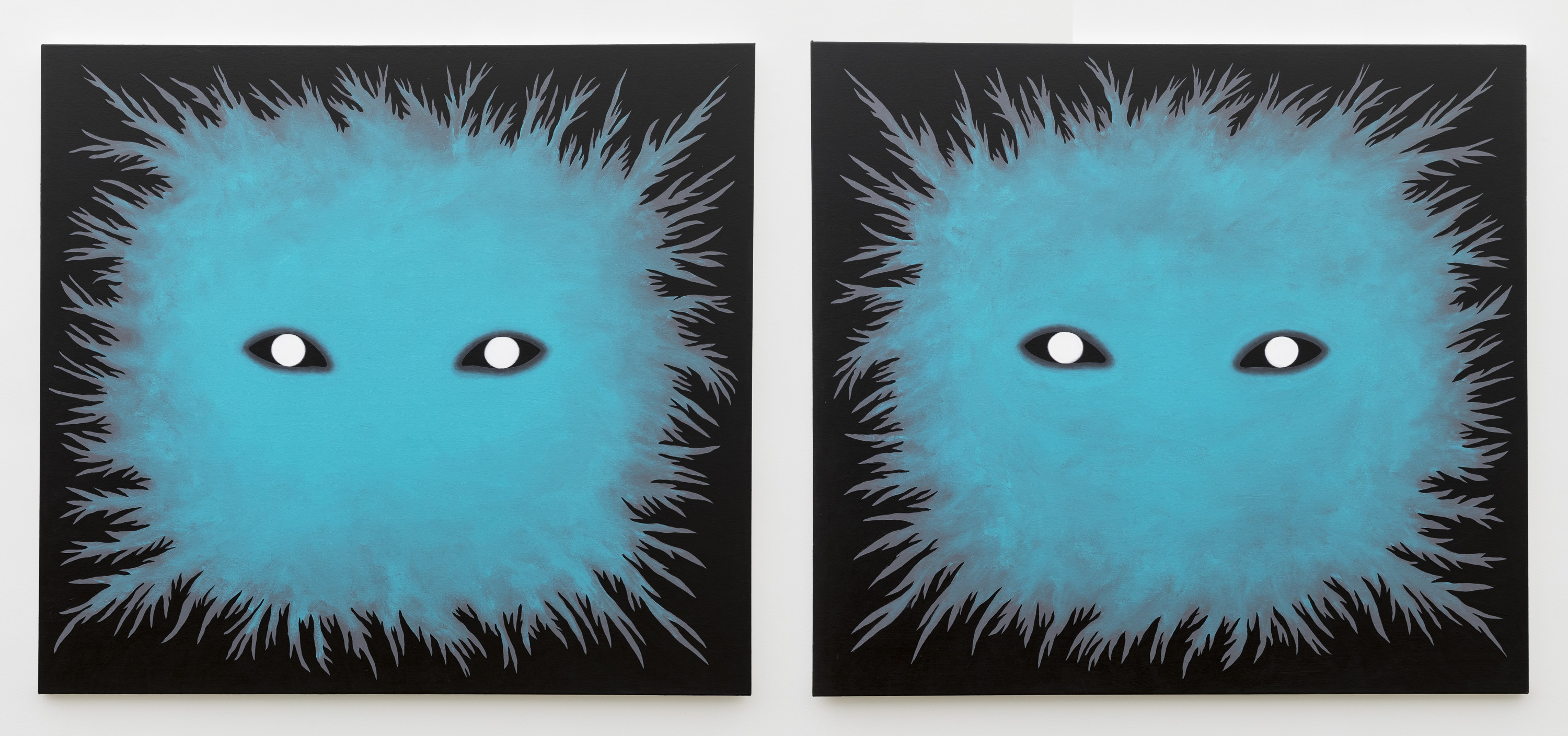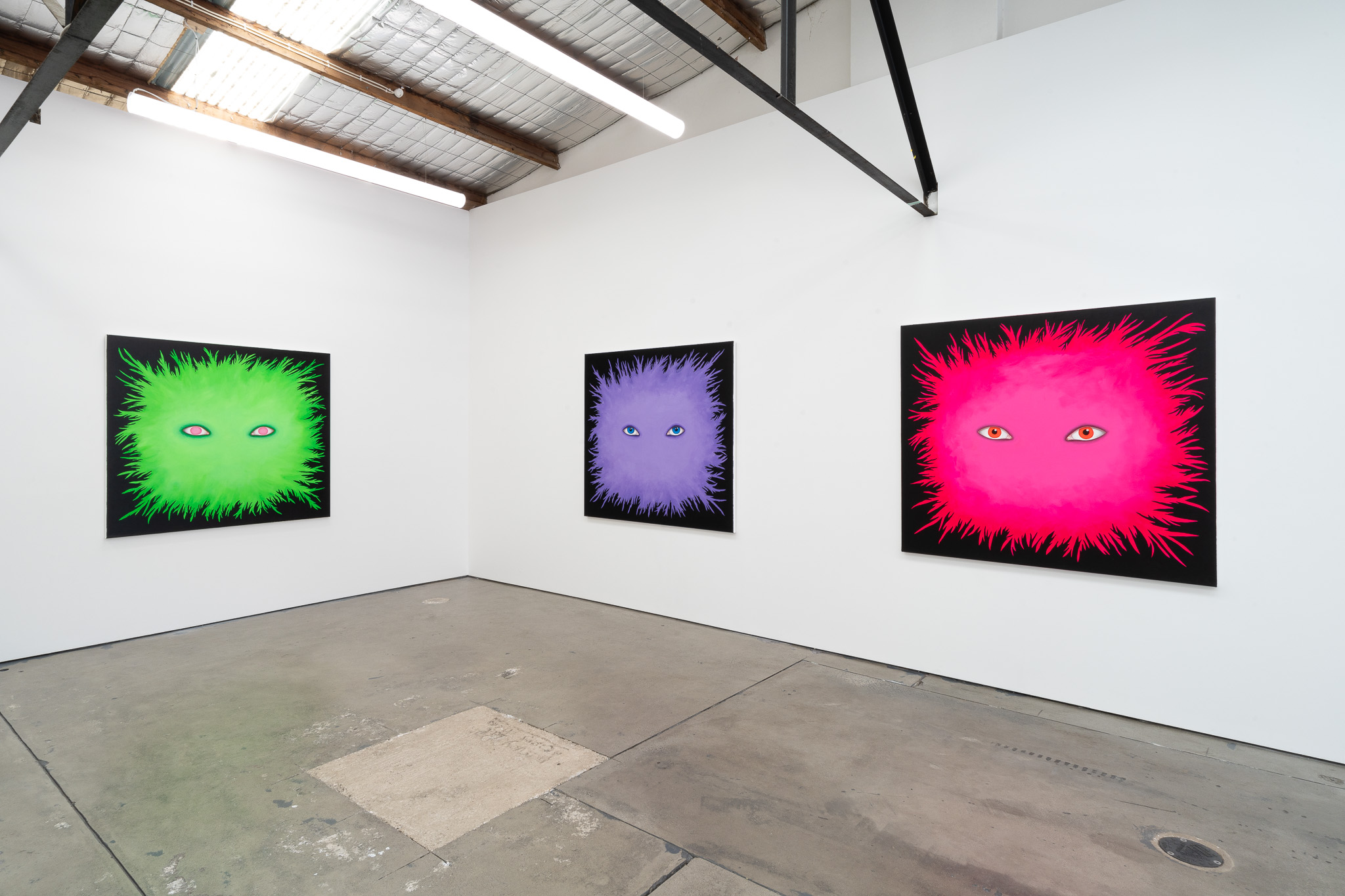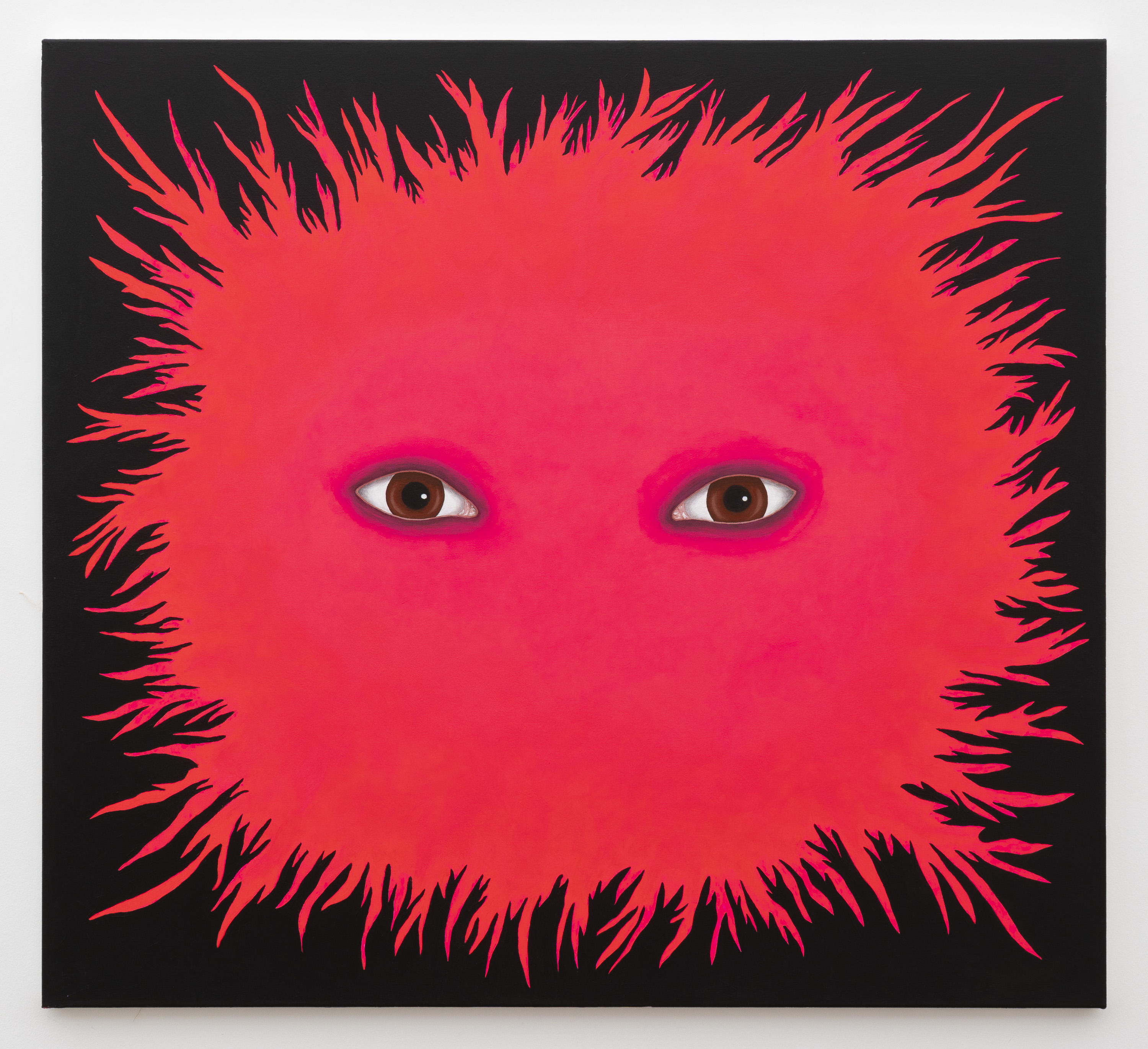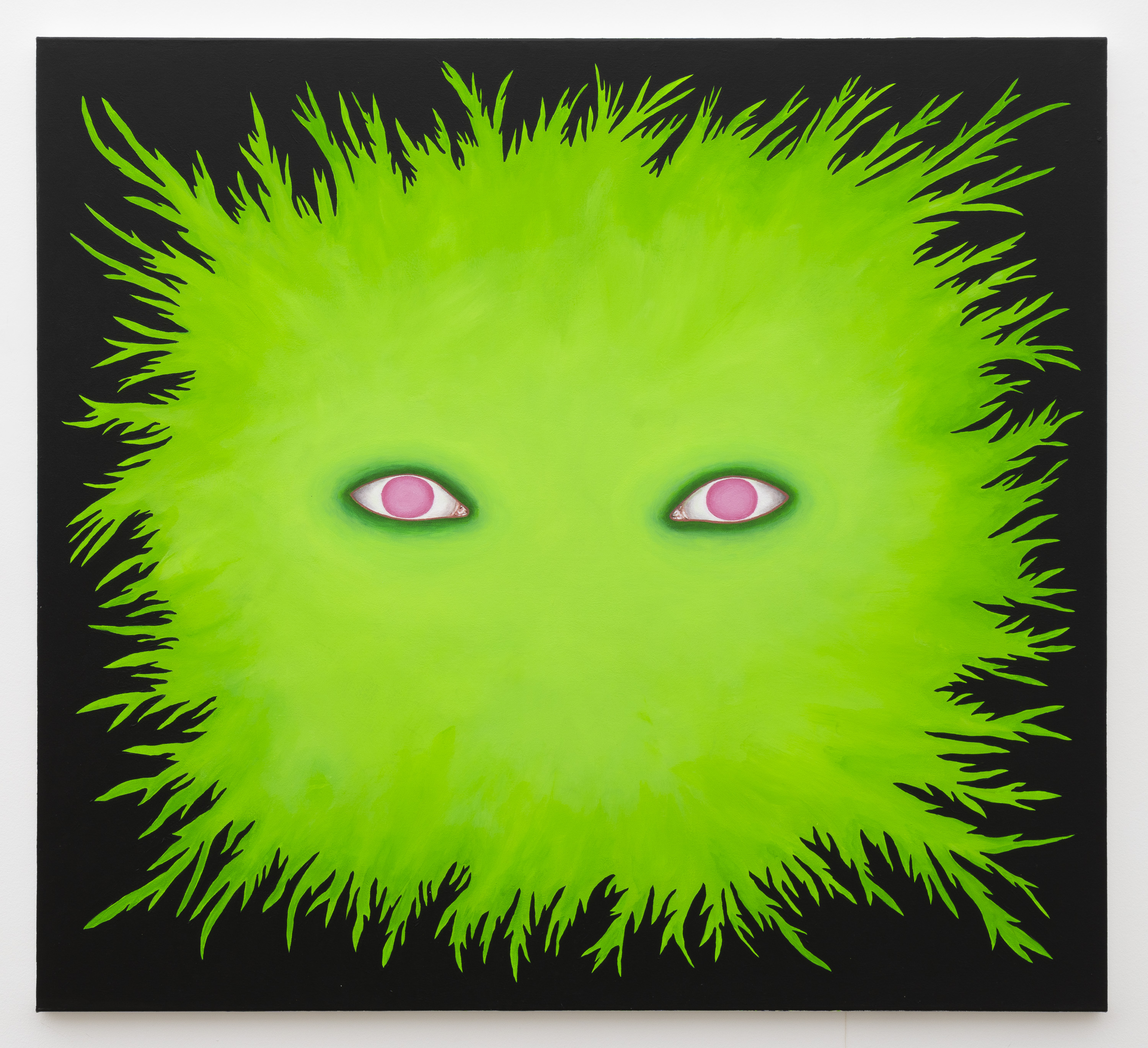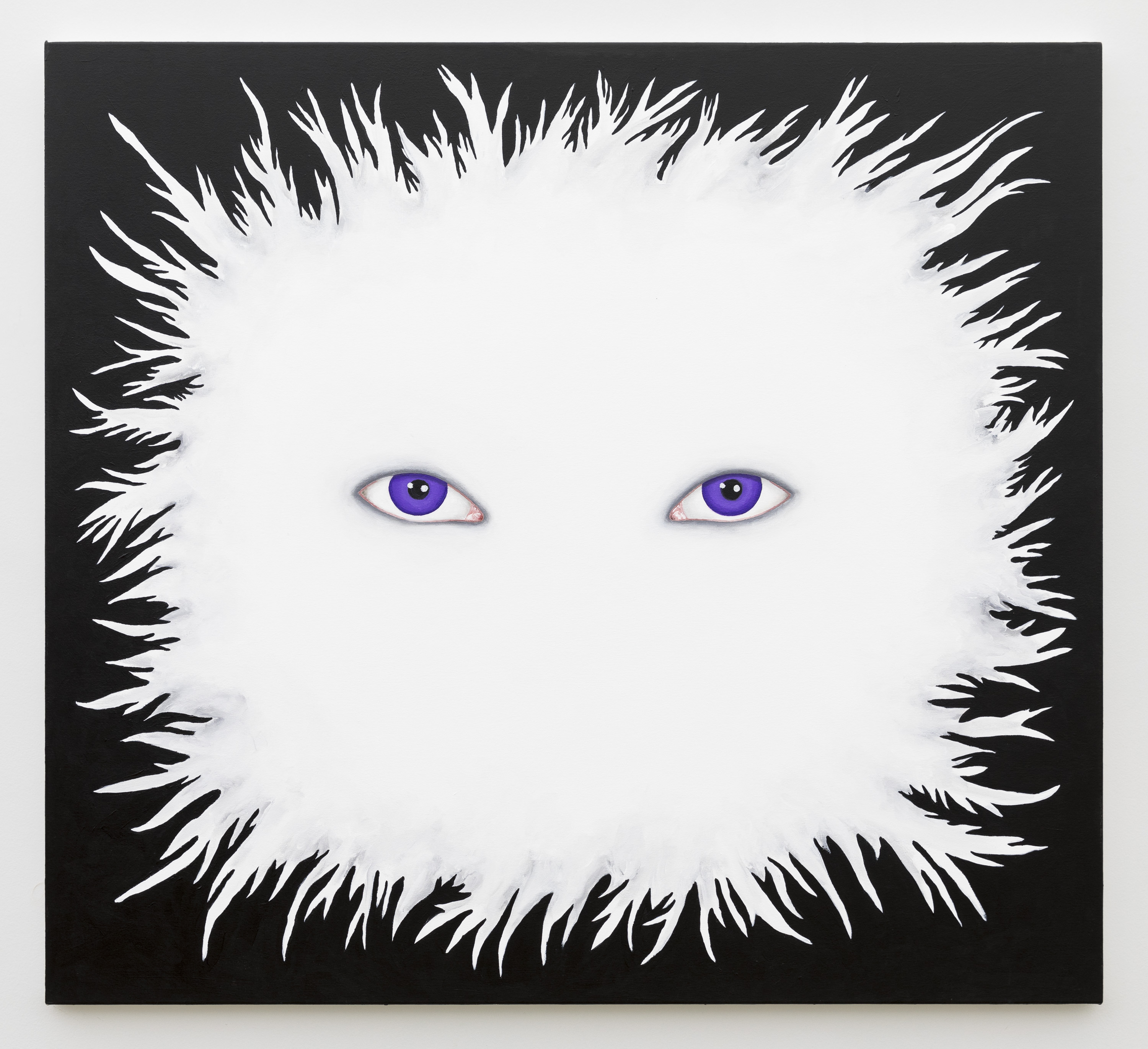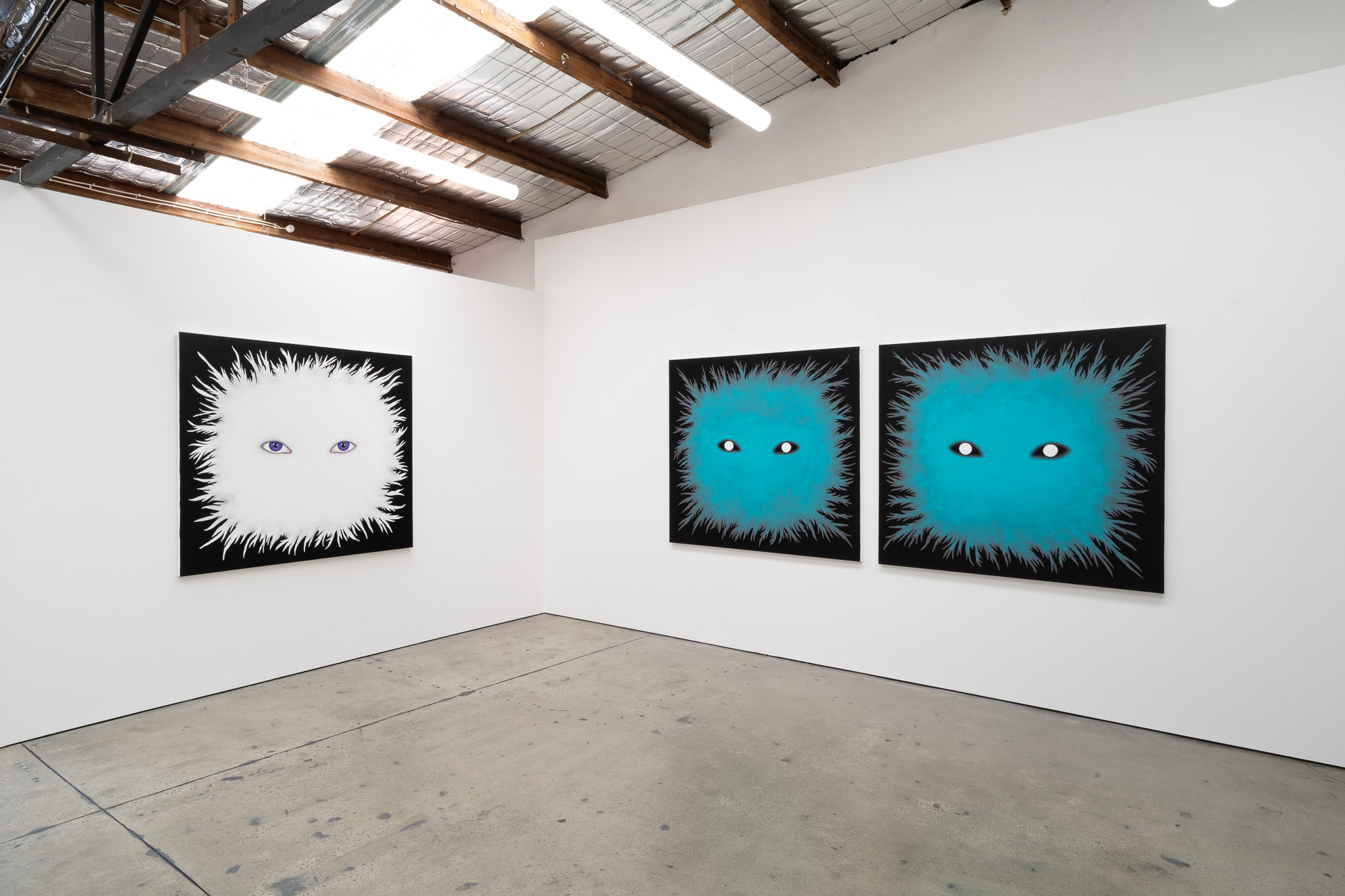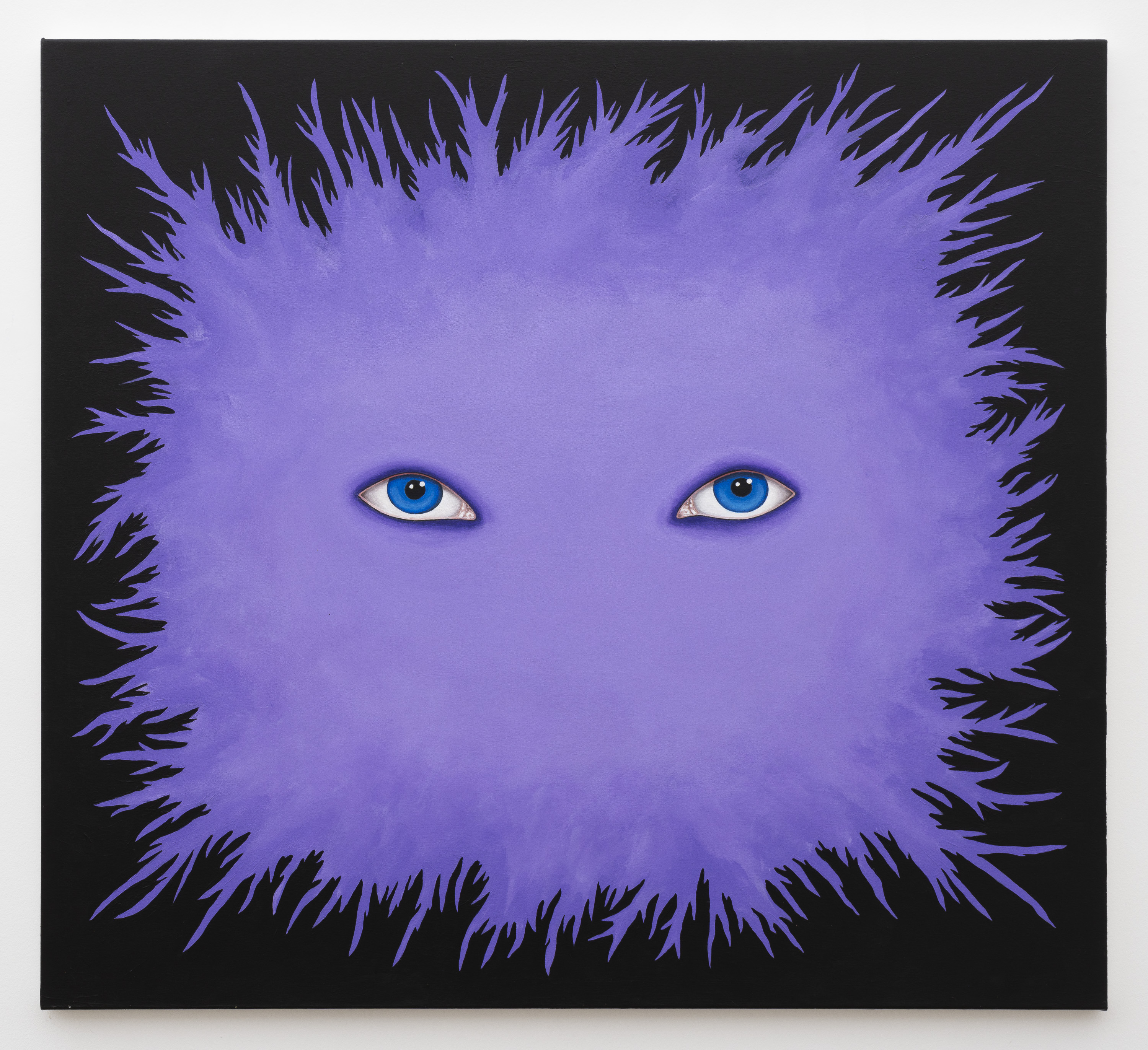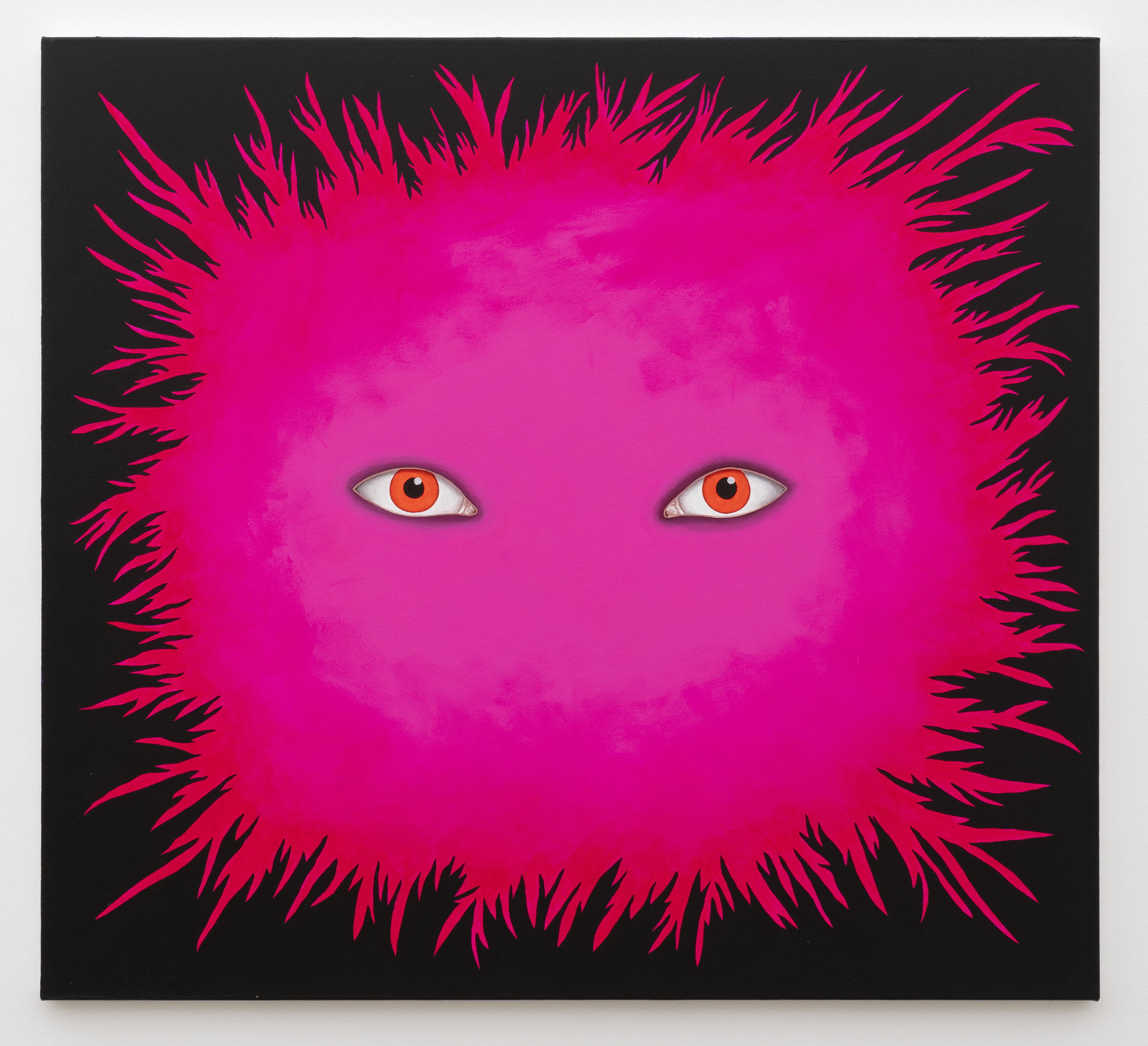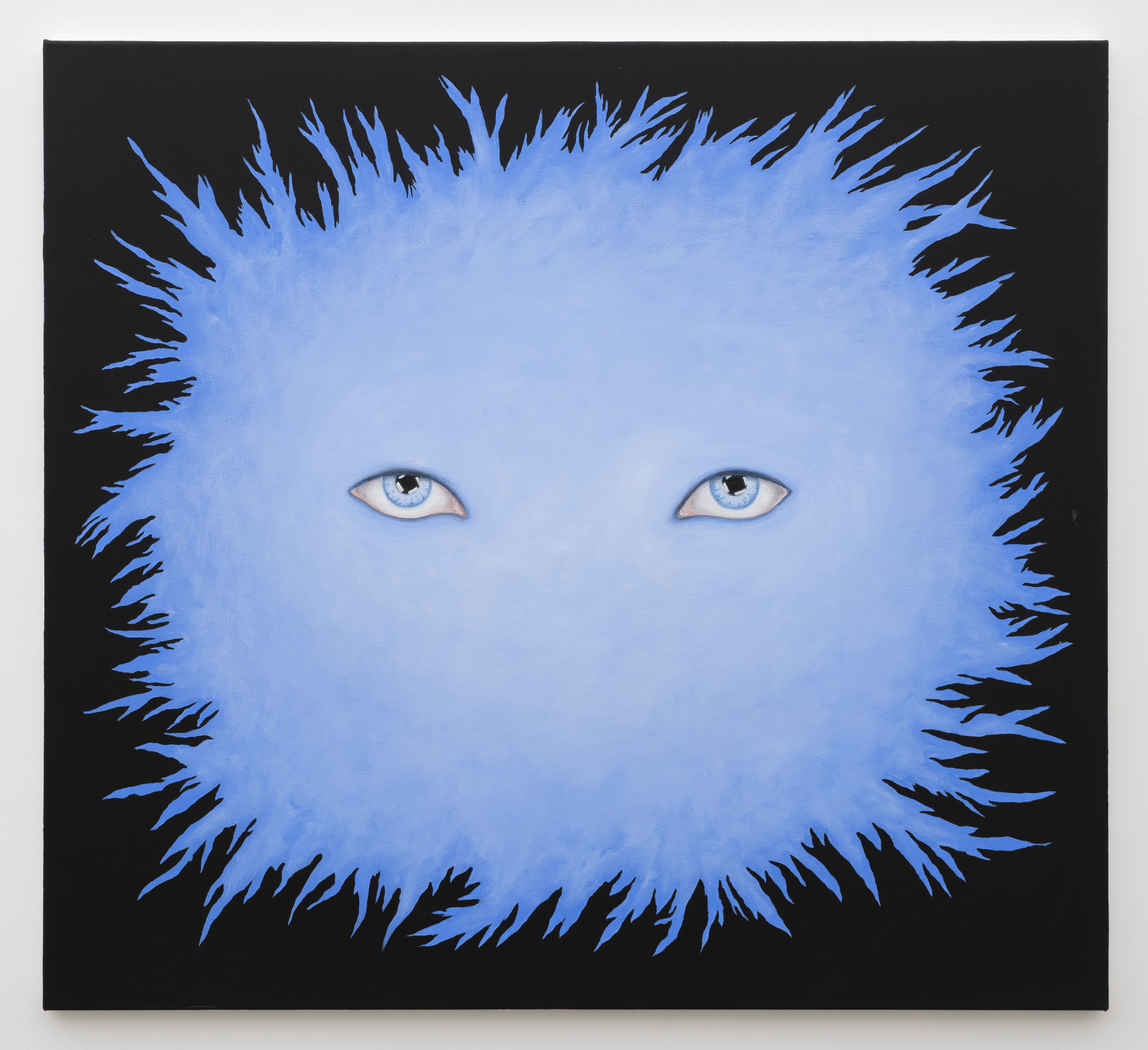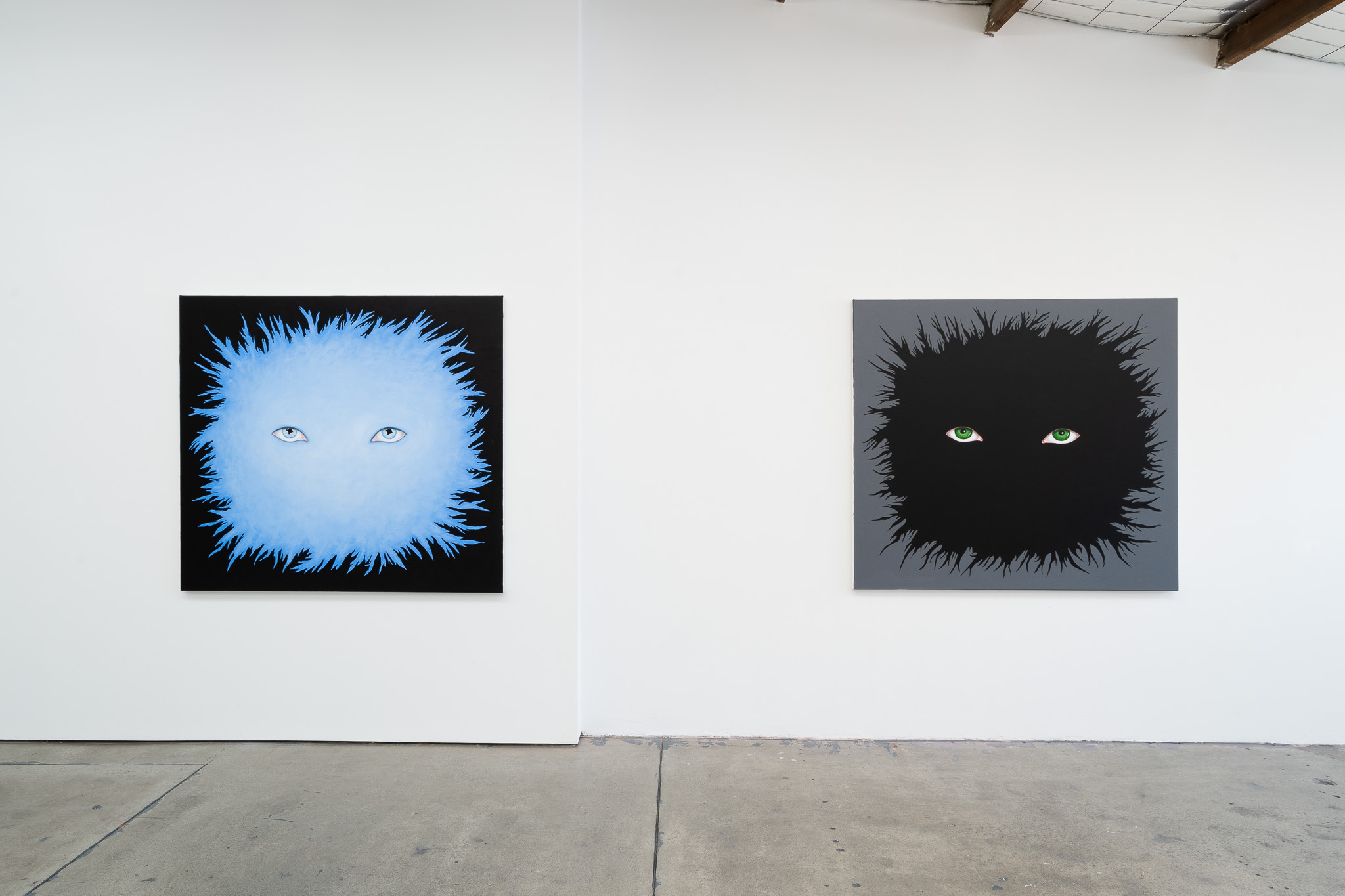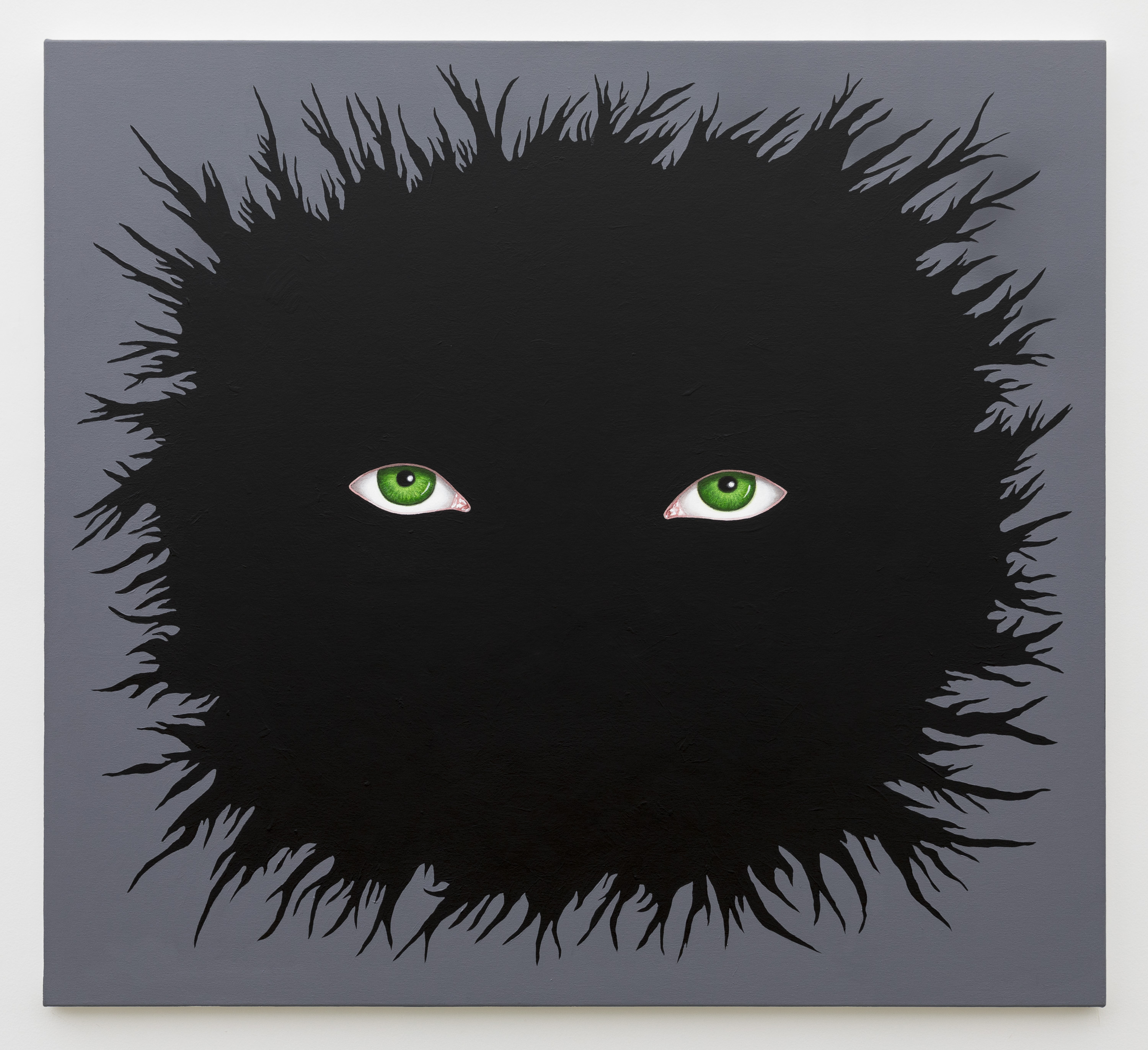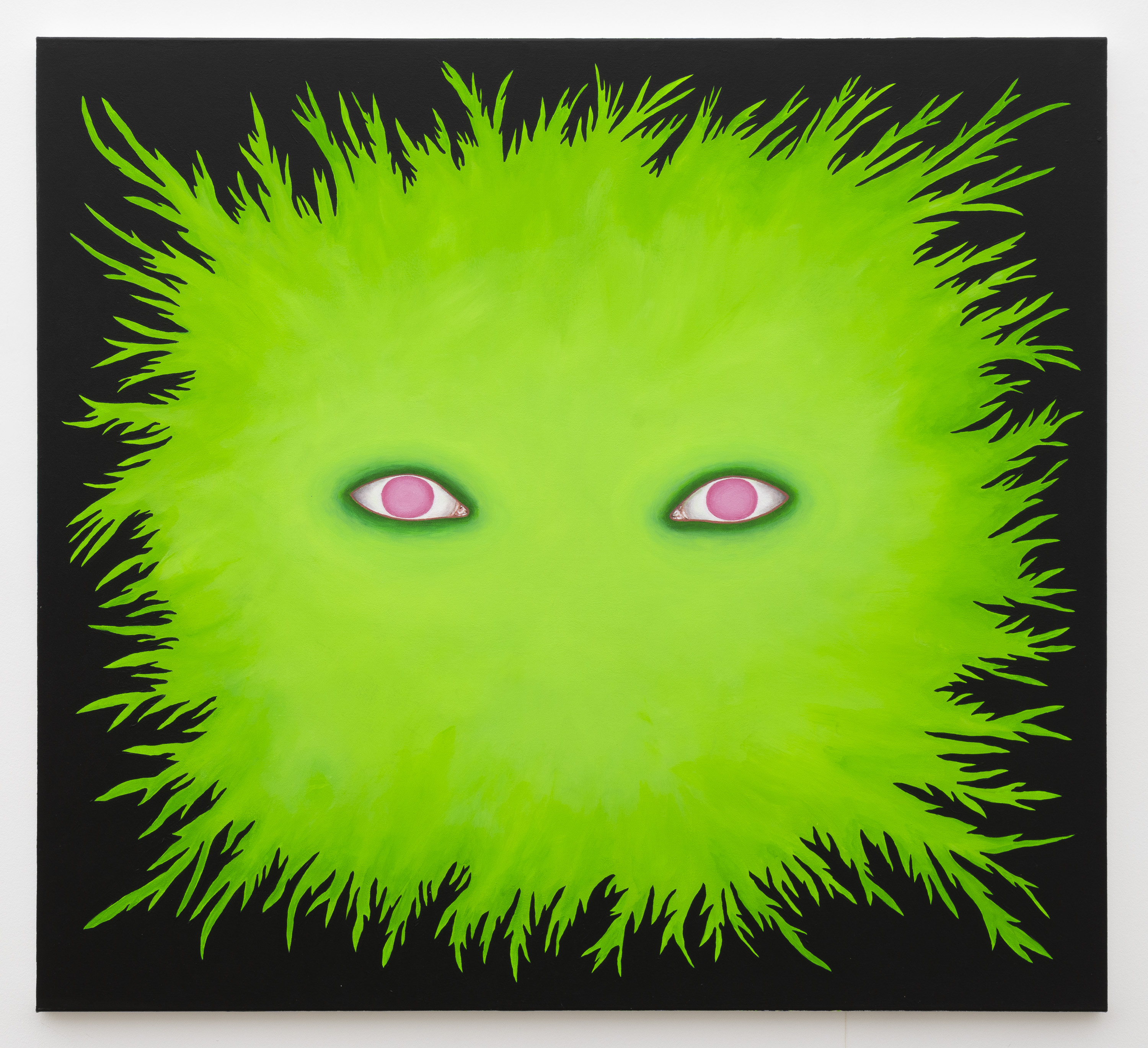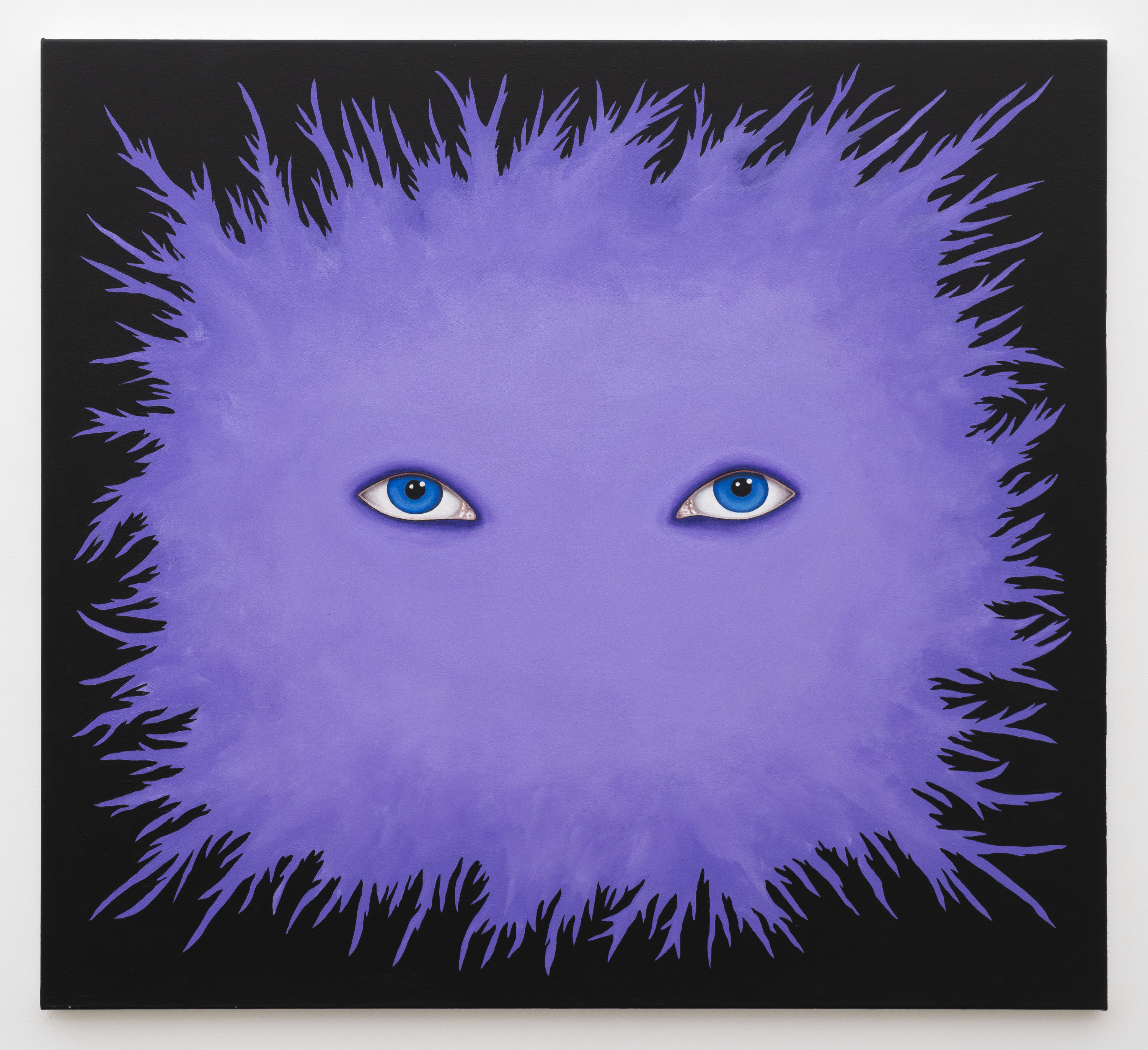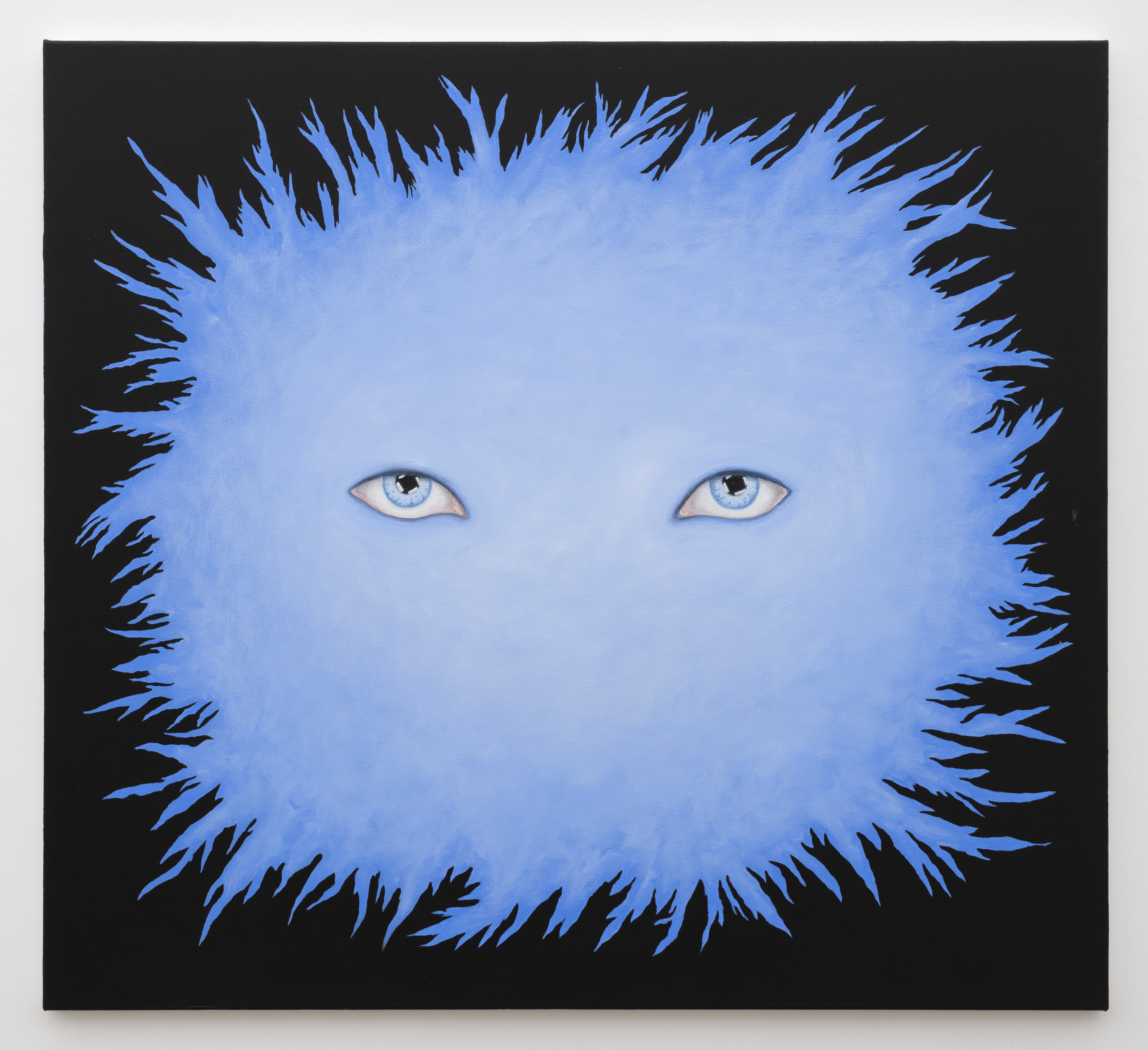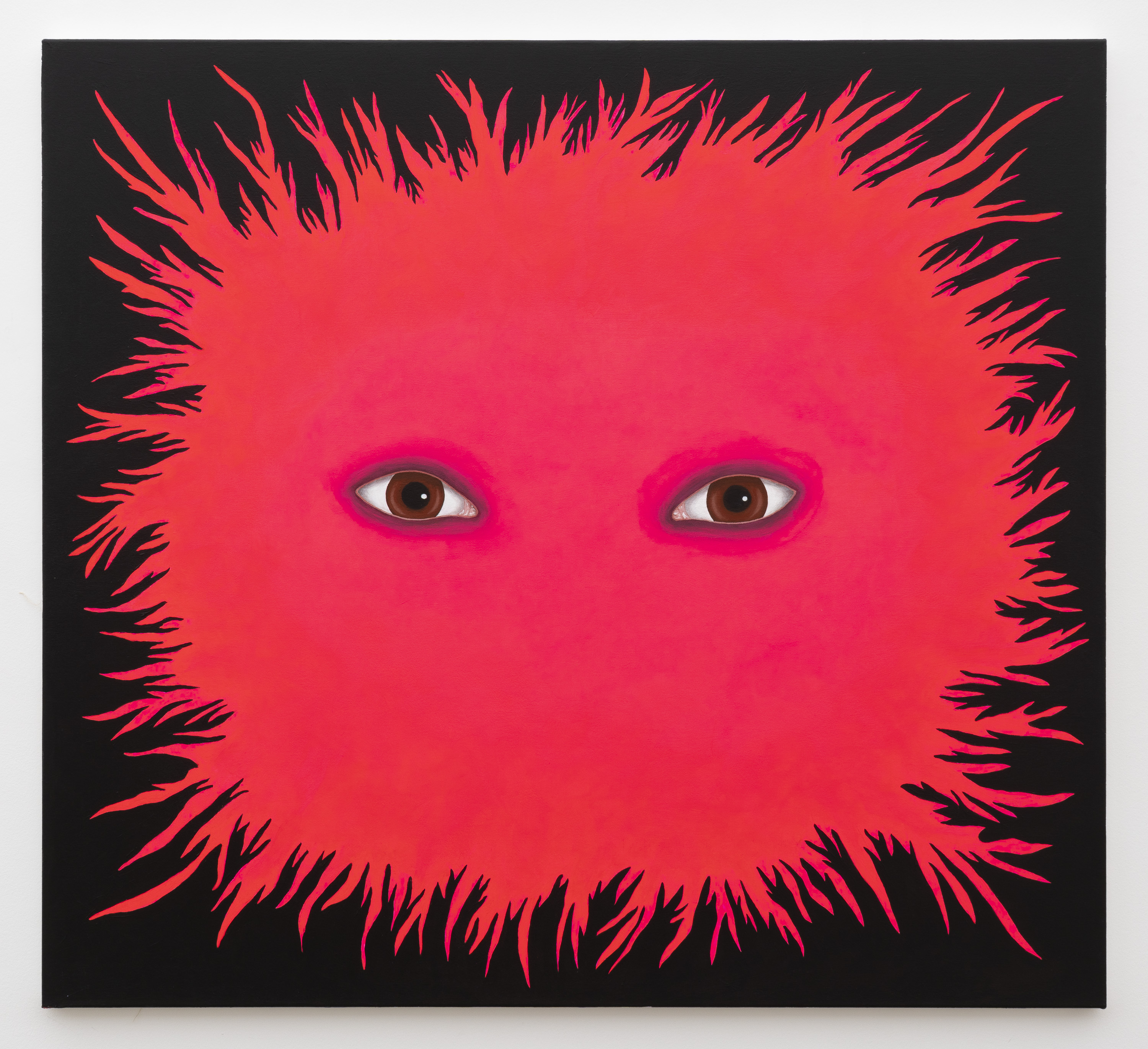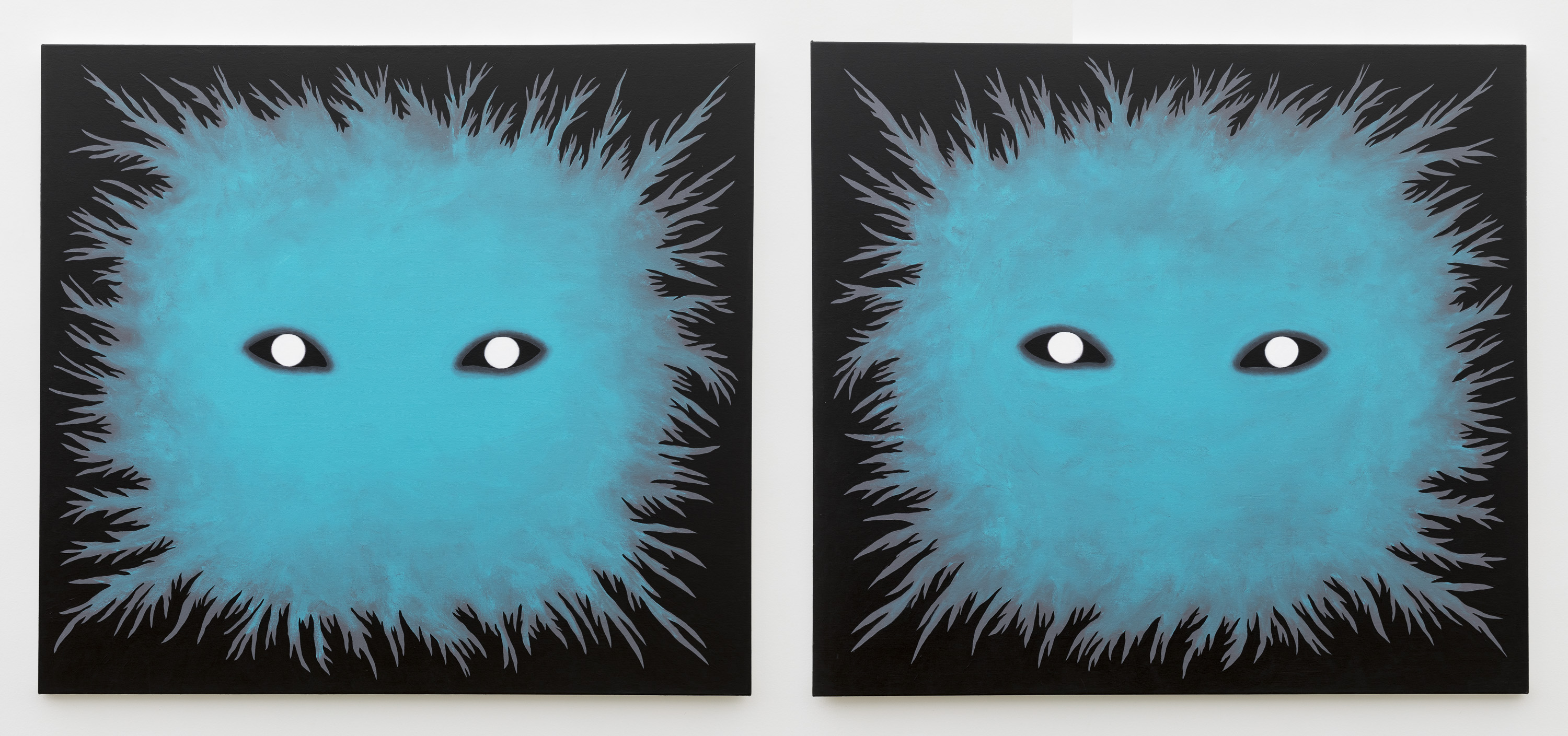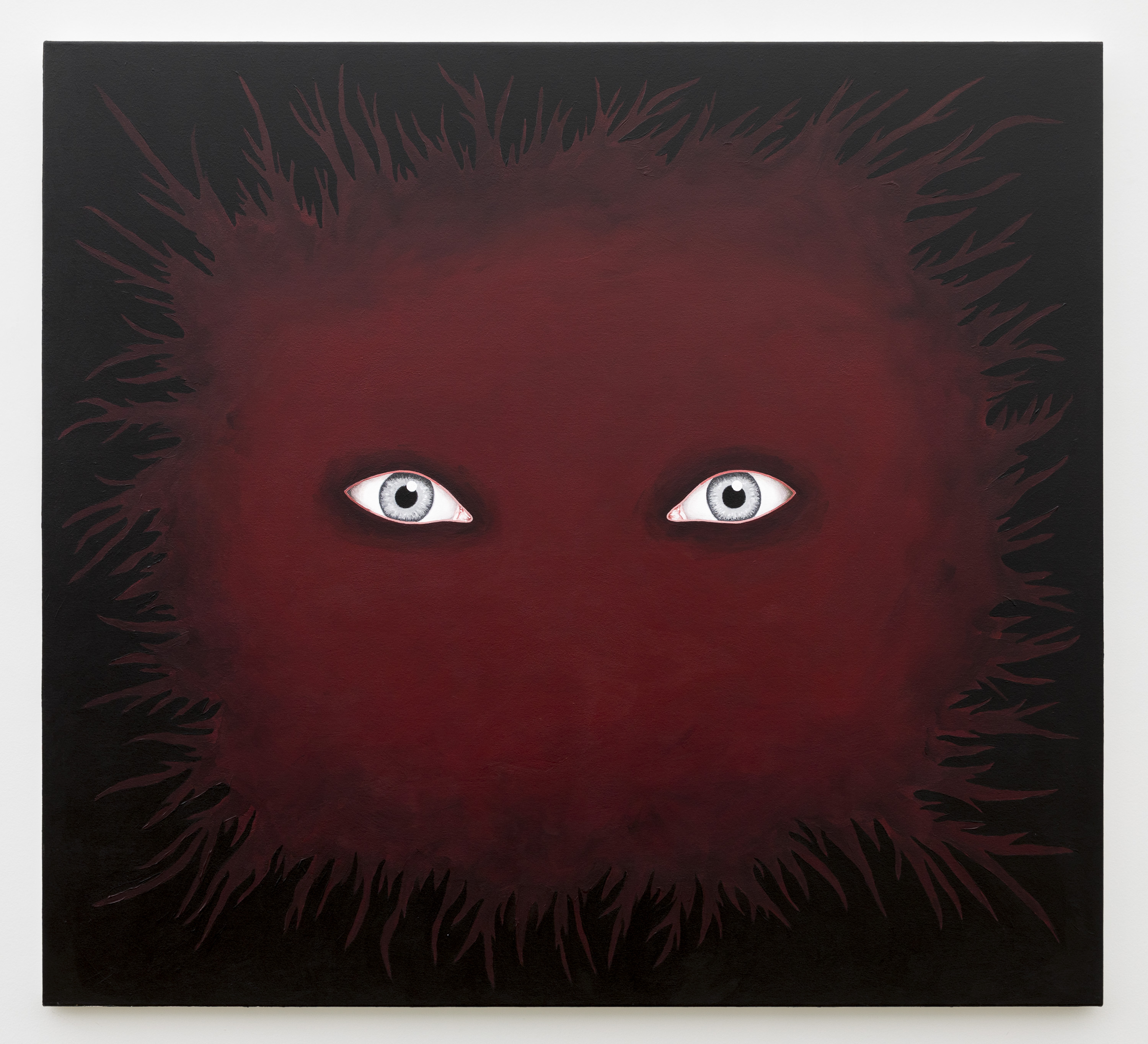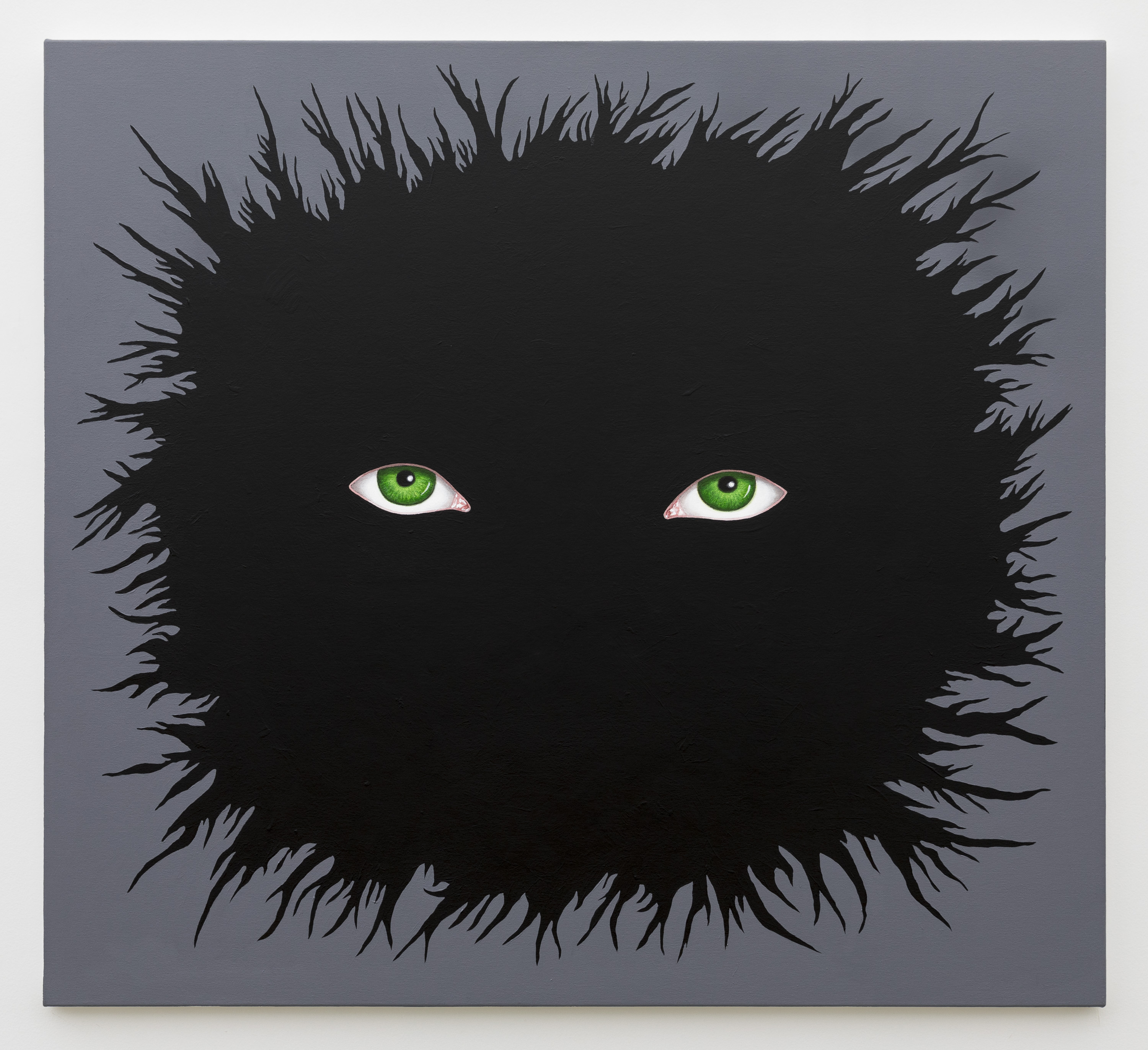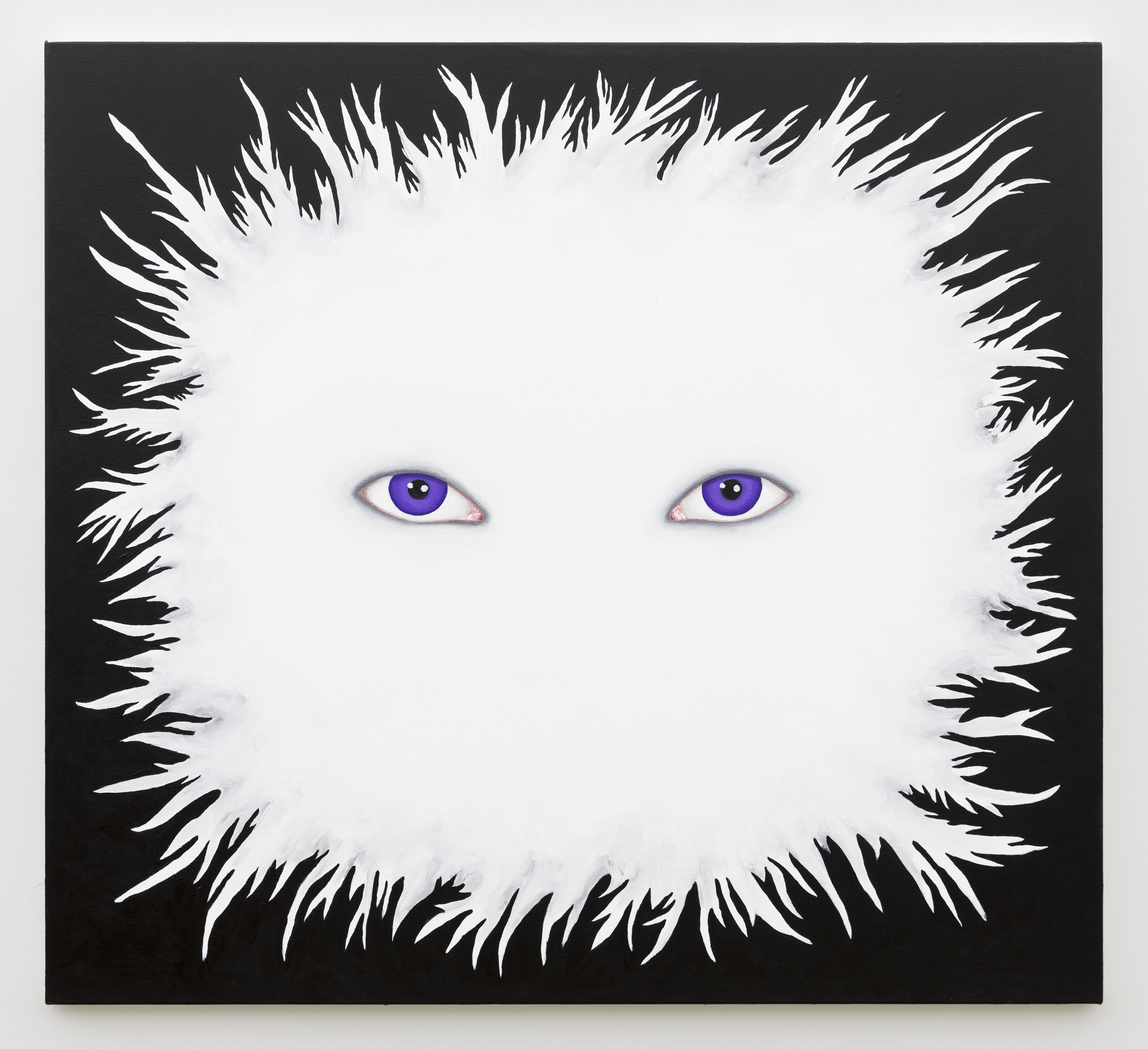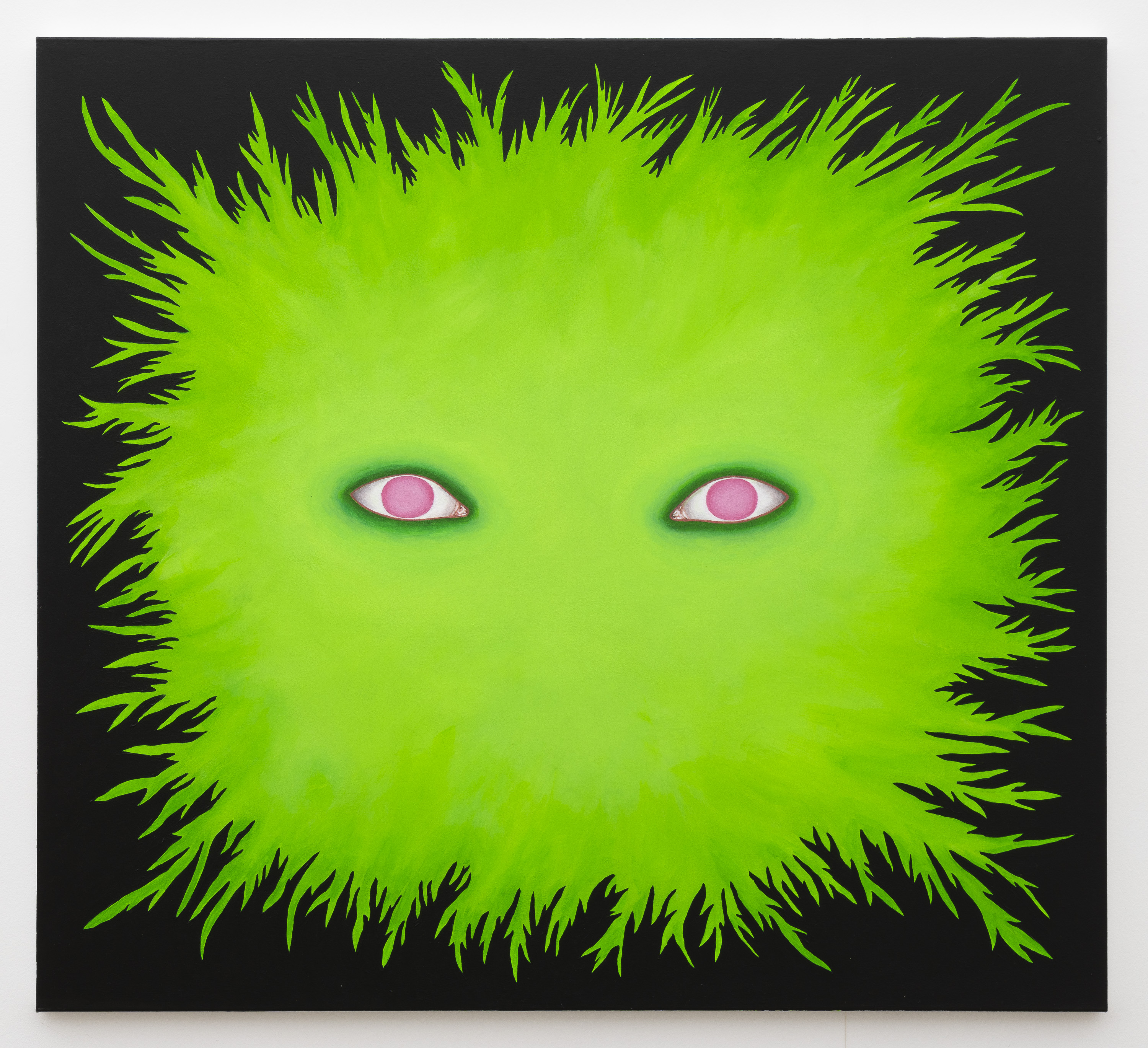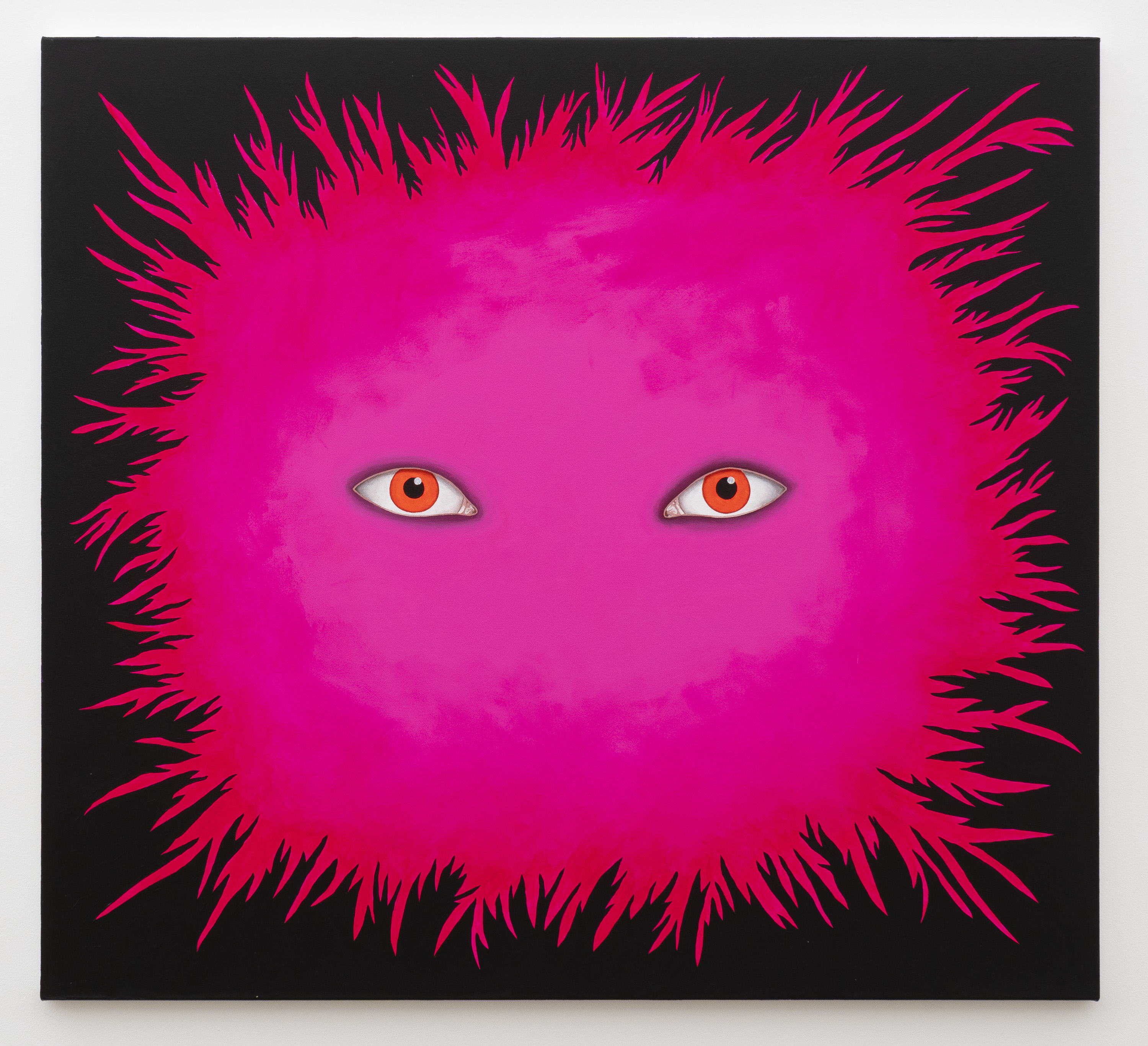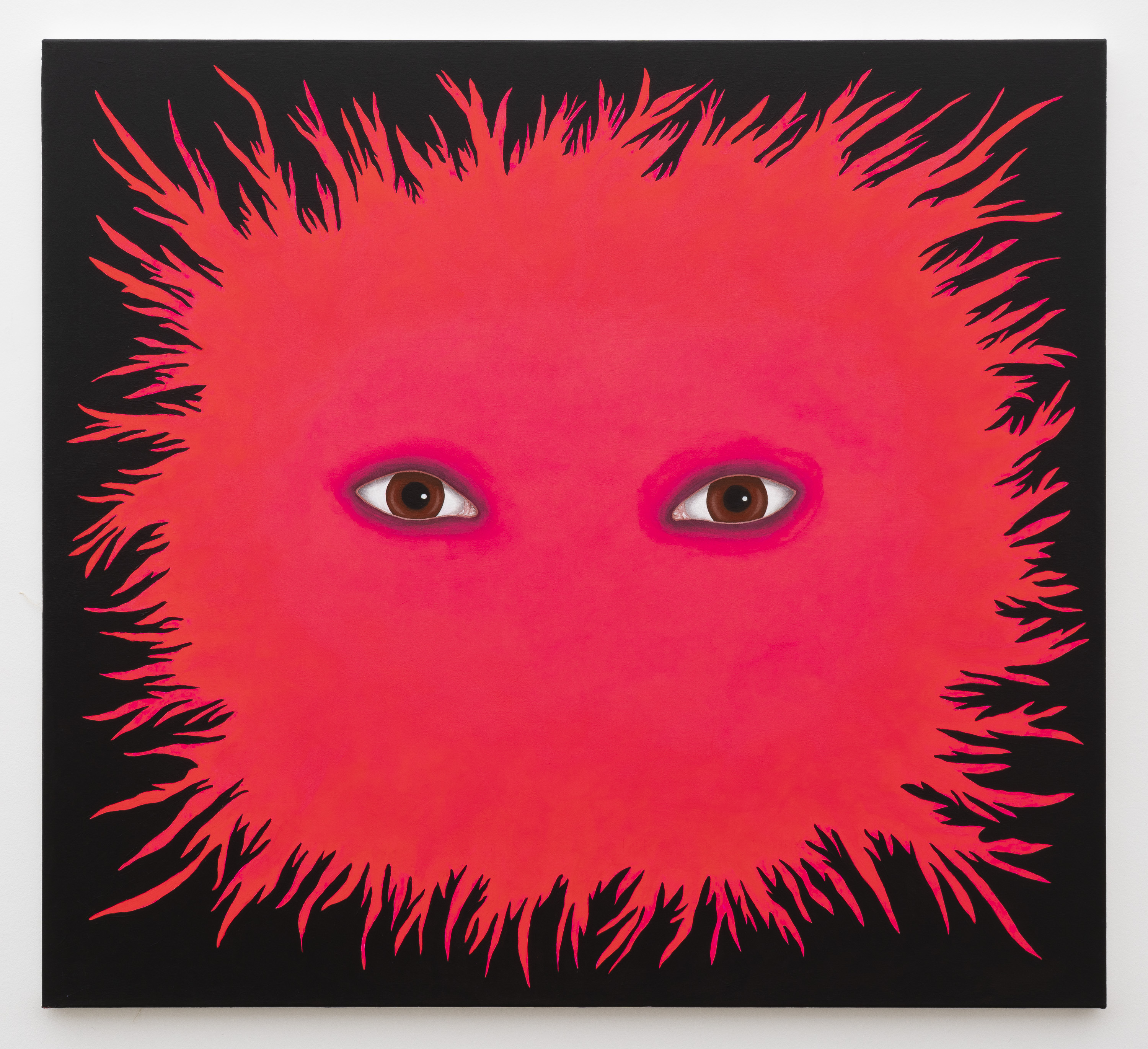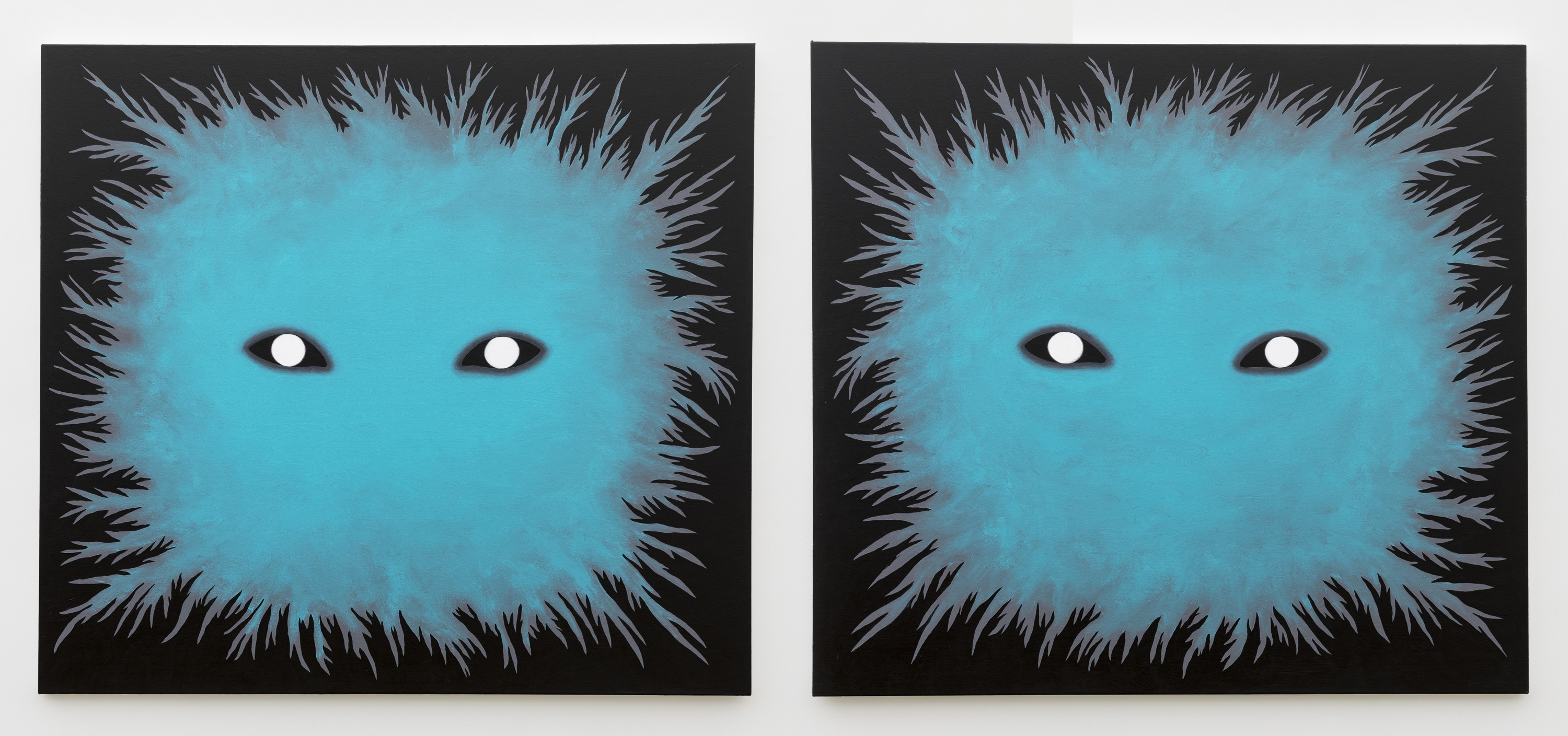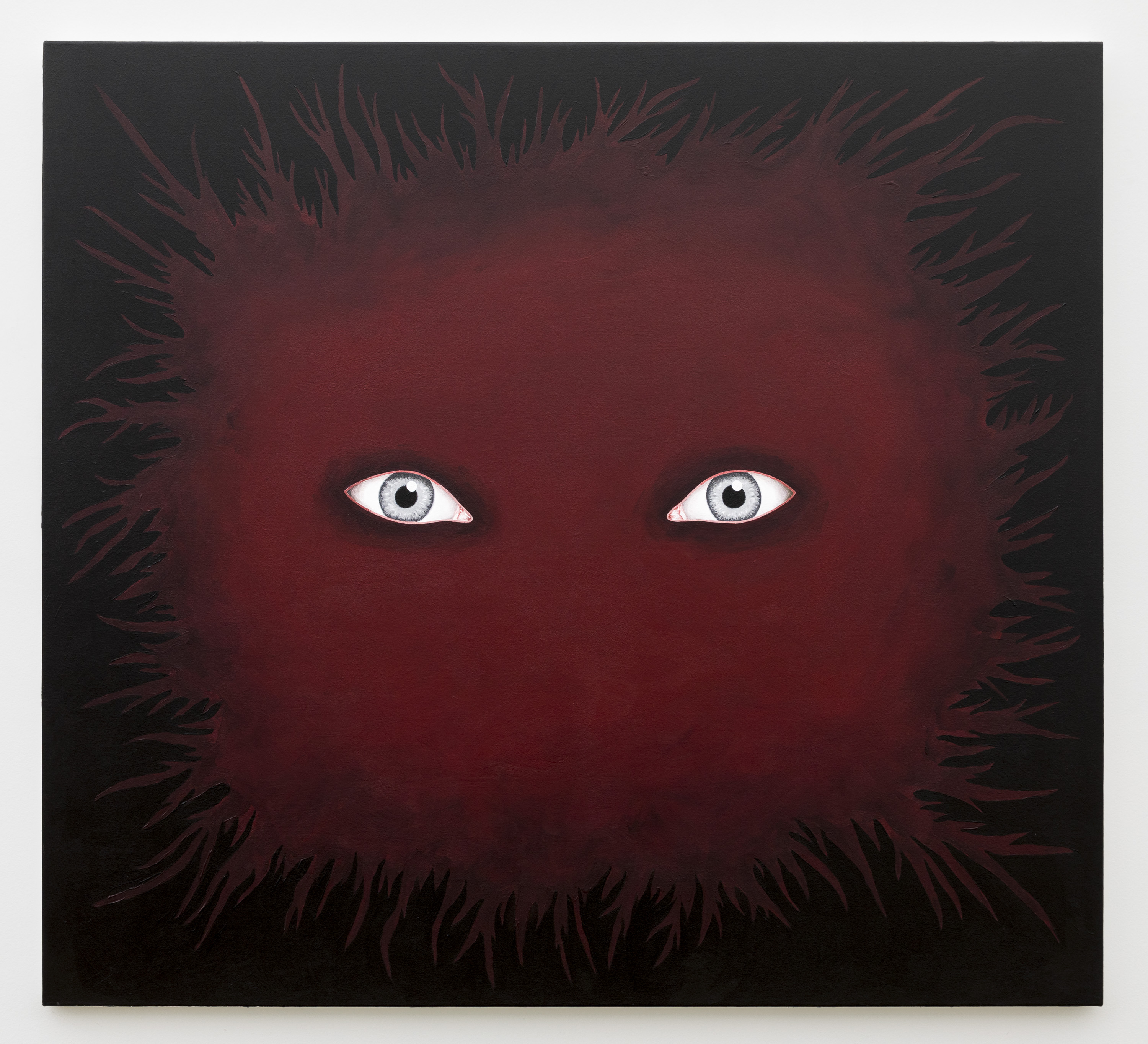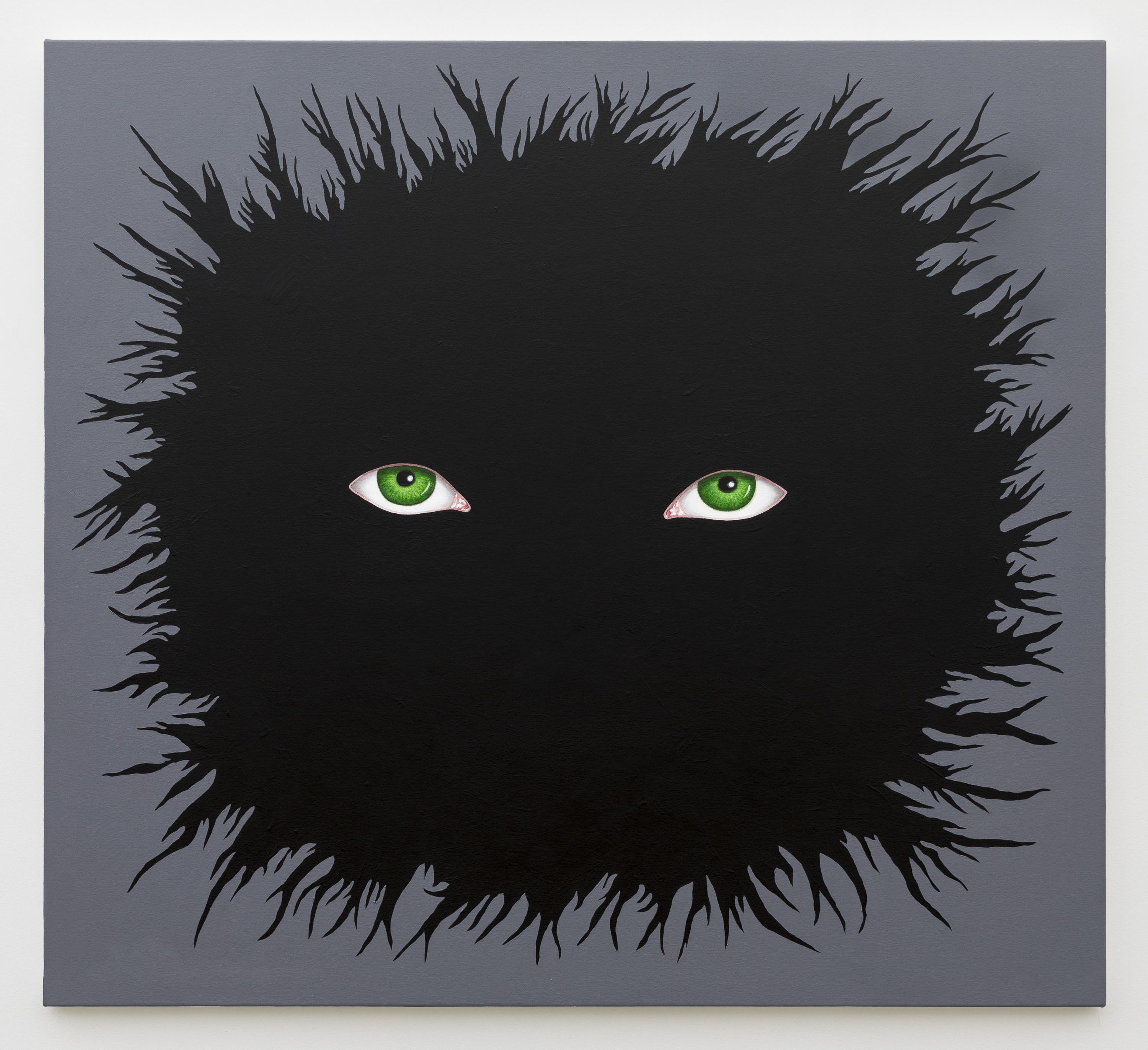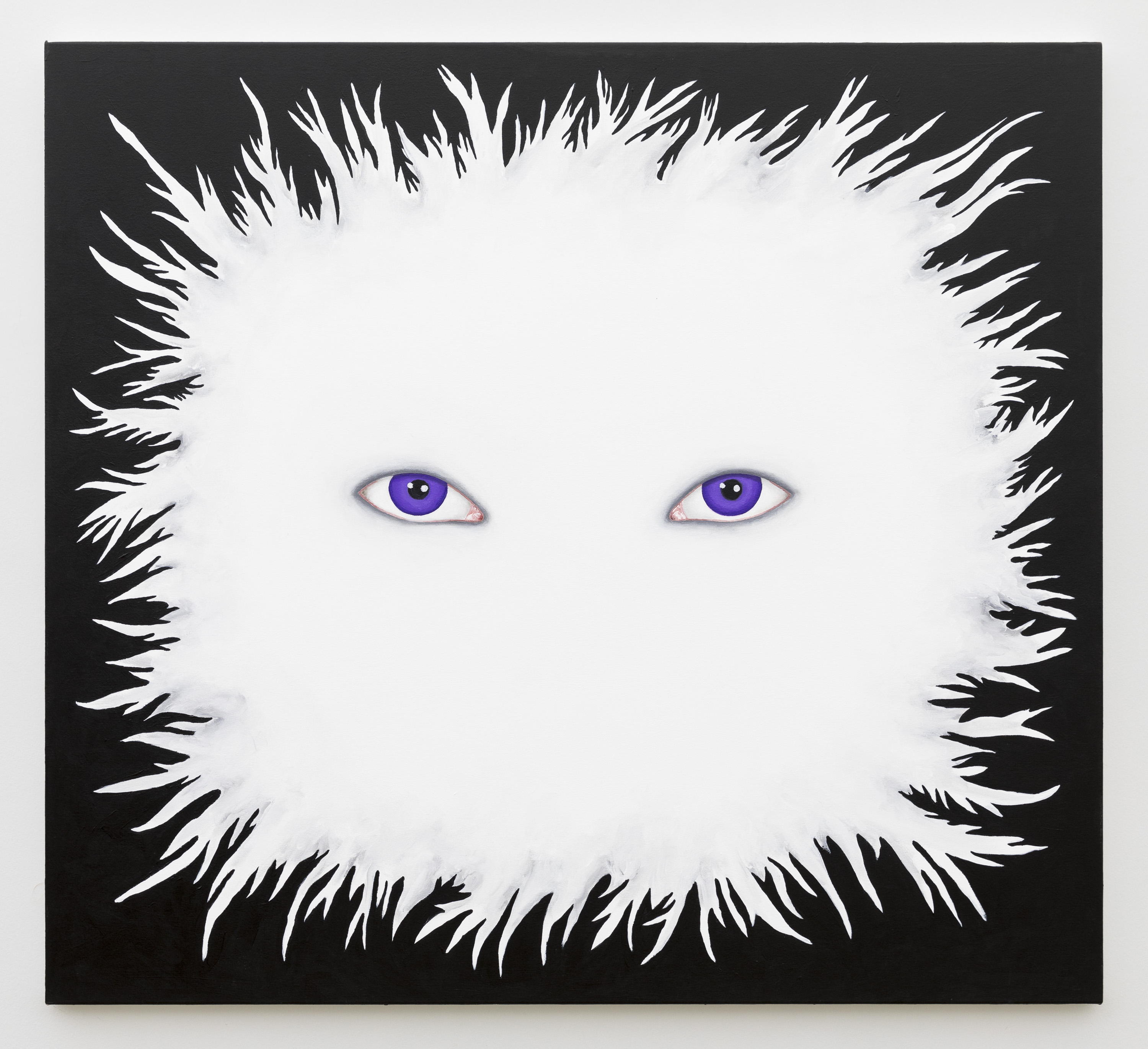Neon Parc is pleased to announce ‘Parasite’, a solo exhibition of new paintings by Maria Kozic. For the artist’s third project with the gallery, Kozic explores the parasite as an analogy for humankind and examines how a parasite can be characterised in a post-pandemic world.
‘Parasite’ consists of eight paintings and one diptych, each portraying a different coloured parasitic creature. Two glowing almond-shaped eyes sit in the centre of each parasite, Kozic rendering the eyes as decidedly human, reflecting the audience’s gaze with feminine poise. Fuzzy and spiky like a spore, the corporeal outlines of their bodies tap into the iconic visual language of Pop Art. The creatures’ skins are viscerally fleshy and laboured over, often darkest around the edges and brighter in the middle, glowing with anticipation.
Ranging from the fluorescent “Peril Pink” (2024) to the dark and brooding “Hysterical Brown” (2024) each parasite has its own distinct personality. The glint of the whites in their eyes delineates the germ more as a voyeuristic seductress lurking close by, rather than a monster to be feared. Kozic understands that parasites or viruses are an integrated part of our biological ecology, and constantly pose the threat of contagion. Kozic says, “Parasites, pathogens, viruses, germs and humans all live together and wreak havoc, but humans are the most evil parasite of all.”
